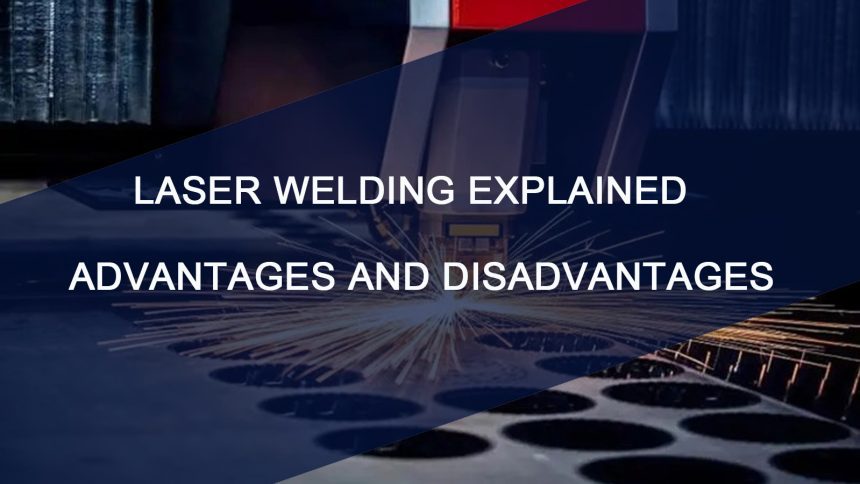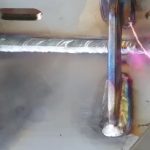Numerous awe-inspiring creations brought to life by technology seem straight out of a movie. One such example is laser welding, now a feasible and widely used method, while laser cutting has been in existence for some time. For many welders, this “high-tech” welding style might be new or unfamiliar. This article aims to explore the advantages and disadvantages of laser welding technology.
Laser welding: fast, precise, and versatile. Learn here about the advantages and disadvantages of laser welding technology.
Welding Town
Laser welding is a cutting-edge technology that has gained significant traction in various industries due to its precision, efficiency, and versatility. In this article, we will delve into the details of laser welding, understanding how it works, its numerous advantages, and the limitations that come with it. Join us on this journey as we explore the fascinating world of laser welding and its impact on modern manufacturing.
Laser Welding Explained
Laser welding is a joining process that utilizes a highly focused laser beam to fuse two or more materials together. This advanced welding technique is widely used in industries such as automotive, aerospace, electronics, and medical devices. The process involves a laser generating an intense beam of light, which is directed onto the workpiece, leading to localized heating and melting of the materials. The molten materials then fuse and solidify, forming a strong bond.
How Does Laser Welding Work?
To understand laser welding better, let’s delve into its fundamental process. The laser beam, typically produced from a solid-state, fiber, or CO2 laser, is focused using specialized optics onto the workpiece. The energy from the laser is absorbed by the material’s surface, causing the temperature to rise rapidly. As the material reaches its melting point, a keyhole is formed – a vapor-filled cavity that allows the laser to penetrate deeper into the material.
The intense heat of the laser’s focused beam melts the material, and as the laser beam moves across the joint, the molten metal solidifies, creating a strong and precise weld. The laser’s energy can be precisely controlled, enabling welders to achieve accurate and intricate welds.
The Advantages of Laser Welding
Laser welding offers a plethora of advantages that make it an attractive choice for various applications. Let’s explore some of the key benefits:
1. High Precision and Accuracy
Laser welding’s focused beam allows for pinpoint accuracy and precise control over the welding process. It is particularly beneficial for welding delicate or intricate components, where traditional welding methods might not be suitable.
2. Minimal Distortion
Compared to conventional welding techniques, laser welding produces minimal distortion in the workpiece. The concentrated heat input helps maintain the material’s integrity, reducing the need for extensive post-welding finishing.
3. Speed and Efficiency
Laser welding is a high-speed process, enabling faster production cycles and increased productivity. The quick welding speeds and minimal setup times contribute to reduced manufacturing costs.
4. Versatility
Laser welding can be employed with a wide range of materials, including metals, plastics, ceramics, and even dissimilar materials. This versatility makes it an invaluable tool across multiple industries.
5. Enhanced Aesthetics
The precise nature of laser welding results in clean, aesthetically pleasing welds, making it ideal for applications where the appearance of the weld is crucial, such as jewelry manufacturing or architectural metalwork.
6. Non-contact Welding
Laser welding is a non-contact process, meaning the laser beam does not physically touch the workpiece. This feature eliminates the risk of contamination and wear on welding equipment.
The Disadvantages of Laser Welding
While laser welding offers numerous advantages, it is essential to acknowledge its limitations as well. Let’s explore some of the disadvantages:
1. Initial Investment Cost
The equipment required for laser welding can be costly, especially for small-scale operations. However, the long-term benefits often outweigh the initial investment.
2. Joint Access
Laser welding is most effective when there is direct line-of-sight access to the joint. Complex geometries or hard-to-reach areas might pose challenges for the process.
3. Material Thickness
When welding thick materials, laser welding might struggle to achieve the same penetration and strength as traditional welding methods.
4. Sensitivity to Surface Conditions
Laser welding is sensitive to surface conditions, and contaminants or surface irregularities can impact the quality of the weld.
5. Skilled Operator Requirement
Operating laser welding equipment requires specialized training and expertise, adding to the overall operational costs.
6. Potential Thermal Damage
In certain applications, the intense heat generated during laser welding can cause thermal damage to nearby sensitive components.
Applications of Laser Welding
Laser welding finds extensive applications across various industries, revolutionizing the way components are manufactured and assembled. Let’s explore some of the prominent applications:
1. Automotive Industry
In the automotive sector, laser welding is widely used for manufacturing body components, exhaust systems, and fuel injection components. Its precision and speed make it a preferred choice for producing high-quality, durable welds.
2. Aerospace Engineering
The aerospace industry benefits from laser welding’s ability to join lightweight materials like aluminum and titanium with minimal distortion. It is commonly used for fabricating aircraft components, fuel tanks, and engine parts.
3. Electronics and Microelectronics
Laser welding plays a critical role in assembling intricate electronic components, such as sensors, microcircuits, and connectors. Its non-contact nature ensures sensitive electronics remain unharmed during the welding process.
4. Medical Devices
The medical industry relies on laser welding for producing small, intricate medical devices like catheters, pacemakers, and surgical instruments. Its precision is vital for ensuring the safety and reliability of these critical components.
5. Jewelry and Arts
Laser welding is a game-changer in the jewelry industry, enabling the seamless repair of delicate pieces without damaging precious stones. Artists and sculptors also use it for creating intricate metalwork with precision and finesse.
6. Pipelines and Oil & Gas Industry
Laser welding finds applications in the oil and gas industry for joining pipes and other components used in pipelines. Its efficiency and accuracy contribute to the overall integrity and safety of the pipeline infrastructure.
7. Consumer Electronics
From smartphones to home appliances, laser welding is widely employed in the production of consumer electronics. It allows for intricate assembly and helps maintain the sleek design of these devices.
Common Laser Welding Techniques
Laser welding techniques vary based on the specific requirements of each application. Here are some common laser welding methods:
1. Conduction Welding
In conduction welding, the laser beam is focused on the material’s surface, causing it to melt and create a bond through surface tension. This method is best suited for welding thin materials.
2. Keyhole Welding
Keyhole welding is used for thicker materials, where the laser’s intense energy forms a keyhole or vapor-filled cavity in the material. The keyhole allows the laser beam to penetrate deeper, resulting in strong welds.
3. Hybrid Welding
Hybrid welding combines laser welding with another welding method, such as MIG or TIG welding. This approach takes advantage of the benefits of both techniques, resulting in a more efficient and effective process.
4. Remote Welding
Remote welding involves the use of fiber optics to guide the laser beam to the workpiece, making it suitable for hard-to-reach or hazardous areas.
5. Pulsed Laser Welding
In pulsed laser welding, the laser beam is delivered in short pulses, allowing for precise control over the weld depth and minimizing heat-affected zones.
Frequently Asked Questions (FAQs)
- What makes laser welding different from traditional welding methods? Laser welding offers higher precision, faster welding speeds, and minimal distortion compared to traditional methods. Its non-contact nature and versatility with different materials set it apart.
- Is laser welding environmentally friendly? Yes, laser welding is relatively eco-friendly. It produces less waste, requires less energy, and reduces the need for harmful chemicals used in traditional welding processes.
- Can laser welding join dissimilar materials? Absolutely! Laser welding is renowned for its ability to join different materials, making it ideal for industries that require the bonding of dissimilar metals or materials.
- How safe is laser welding for operators? Laser welding is safe when performed by trained operators using proper protective measures. The non-contact nature of the process minimizes physical risks associated with traditional welding.
- What are the limitations of laser welding for thick materials? Laser welding might struggle to achieve the same penetration and strength as traditional welding methods when joining thick materials. In such cases, other welding techniques may be more suitable.
- Can laser welding be automated? Yes, laser welding can be automated to a great extent, enhancing productivity and consistency in the welding process.
Conclusion
Laser welding has undoubtedly transformed the welding industry with its precision, efficiency, and versatility. From the automotive and aerospace sectors to consumer electronics and medical devices, this advanced technology plays a crucial role in various applications. While it boasts numerous advantages, it also comes with certain limitations that need to be carefully considered.
As technology continues to advance, laser welding is likely to become even more refined, enabling new possibilities in manufacturing and design. Its ability to join dissimilar materials and create aesthetically pleasing welds makes it a valuable asset in modern engineering.
Next time you see a beautifully welded piece of jewelry or marvel at the complexity of an aircraft component, you’ll know that laser welding played a significant role in its creation.












